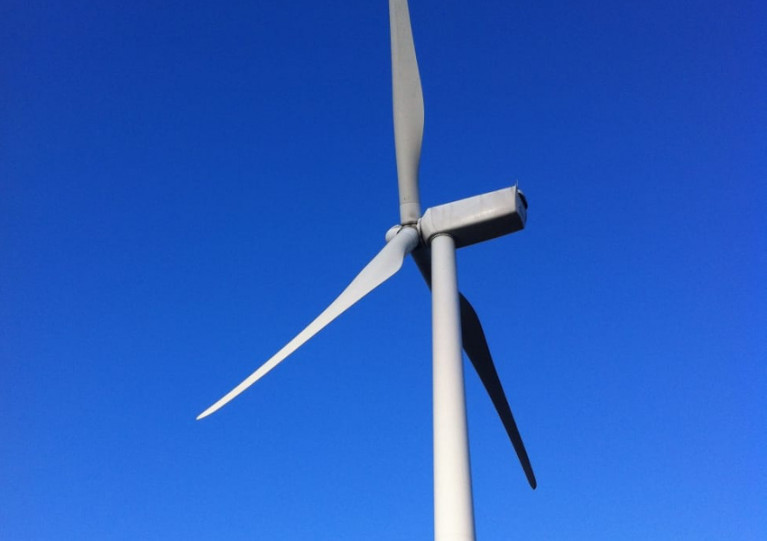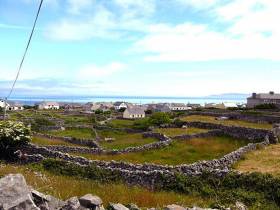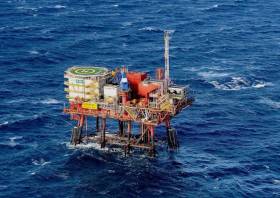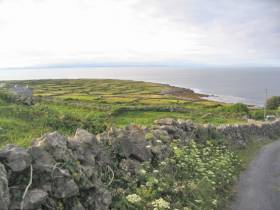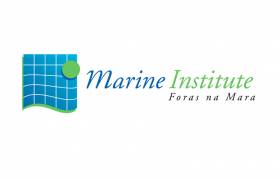Displaying items by tag: renewable energy
Rosslare is the latest Irish port to make its pitch as a hub for offshore renewable energy.
Hot on the heels of Ros-a-Mhíl and Galway port, Rosslare Europort wants to highlight its role in the multi-million euro energy sector.
Port owner Iarnród Éireann is to host an event on Friday, April 22nd, where it will discuss its role as “Ireland’s gateway to Europe”.
It will also present its vision for the southeast and its location as an offshore renewable energy hub.
Iarnród Éireann chief executive Jim Meade and Rosslare Europort general manager Glenn Carr will welcome speakers, including director of Ireland South East Development Office, Alan Quirke and Wind Energy Ireland head of policy, Niall Goodwin.
Dr Karen Hennessy, head of the Wexford Campus of Institute of Technology Carlow, will also participate, along with Iarnród Éireann’s assistant director of new works, Ciaran Browne.
While Killybegs harbour is synonymous with the fisheries sector a new video released by Ronan Renewables shows just how the County Donegal port is increasingly catering to the renewable energy sector.
While home to a large portion of the Irish fishing fleet in the winter months, the port is also ideal for affordable import/export and storage for a range of industries.
With open Atlantic ocean access, Killybegs harbour also offers 24/7 ships agency, stevedoring and storage facilities at its 300m pier of 12m draft.
Ronan Group Renewables, headed by Sligo sailor Conor Ronan, who operate out of Killybegs, are directly and indirectly responsible for 200 MW of installed capacity across its onshore assets.
Check out the video below.
Government Sets Policy for Ireland’s Commercial Ports to Develop Infrastructure to Support Offshore Renewable Energy
The Department of Transport has published a Policy Statement setting out the strategy for commercial ports to facilitate offshore renewable energy activity in the seas around Ireland.
The document will also assist Ireland’s commercial TEN-T ports in applying for EU funding to develop new infrastructure.
It’s part of a series of Government measures to prepare for a massive expansion of offshore renewable energy (ORE), including the passing last week of the Maritime Area Planning Bill.
The Programme for Government set a target for 70% of electricity to be generated from renewable sources by 2030 and for 5GW of offshore wind by 2030. The Climate Action Plan published on 4th November 2021 (CAP 21) has since increased the target to up to 80% renewable electricity by 2030.
Both plans also set out how Ireland will take advantage of the potential of at least 30GW of floating offshore wind power in our deeper waters in the Atlantic.
Given Ireland’s increased ambition in ORE and pending a review of overall national ports policy, the Department of Transport — in conjunction with the Irish Maritime Development Office (IMDO) — conducted an assessment of the options for Irish State ports to facilitate the ORE sector and assist in Ireland achieving its emission reduction targets.
On receiving the recommendations of that assessment, the Minister for Transport has decided that a multi-port approach will be required.
A number of ports will be required to provide facilities for the different activities at several locations around the country and at different times for the various phases of the fixed and floating ORE developments.
The department says this will maximise the economic benefits at both regional and national level in terms of job creation and new SME enterprises in areas such as engineering, fabrication, transport and logistics, and other technologies.
Touting Ireland’s ORE resources as “one of the best…globally”, the department adds that there is very significant potential in utilising these resources to generate carbon-free renewable electricity and in time develop an export market in green energy.
Transport Minister Eamon Ryan said: “Offshore renewable energy developments will typically require both large-scale port infrastructure for project deployment and smaller-scale port facilities to provide ongoing operation and maintenance services.
“Around the Irish coast, ORE projects will develop in several phases. To meet Ireland’s target of 5GW by 2030, it is clear that more than one port will be required. This will mean new jobs and new businesses in and near our ports, to support the development of offshore wind at various locations, beginning on the east coast and expanding to the west coast at a later stage.
“This approach is best suited to deliver the offshore renewable energy targets set out in the Programme for Government and the Climate Action Plan 21, and to position Ireland to take advantage of the economic opportunity created by the roll out of both fixed and floating offshore wind in Irish waters.
“This Policy Statement makes it clear to the offshore industry that the Government is committed to the provision of port facilities in Ireland for ORE developments, and I would encourage our TEN-T ports to apply for the EU funding that has recently been made available for this sector.”
A number of ports and private entities are already progressing plans to provide the facilities and infrastructure required to assist the ORE sector to develop in Ireland.
Plans underway include preparations for the provision of large-scale deployment facilities at Rosslare Europort and at Cork Dockyard facility (formerly Verolme Dockyard) located within the limits of the Port of Cork.
Drogheda Port is also proposing developing large-scale deepwater port facilities on the East Coast and Shannon Foynes Port Company and ESB are planning large-scale development within the Shannon Estuary.
Wicklow and Arklow have already entered arrangements with individual ORE project developers to serve as operation and maintenance bases.
The department also indicates that there will be opportunities for other ports such as the ports of Waterford, Galway, Bantry under the Port of Cork and the Fishery Harbour Centres of Ros an Mhíl, Killybegs and Castletownbere which are under the remit of the Department of Agriculture, Food and the Marine.
The Department of Transport says it will establish a ports co-ordination Group to coordinate port responses and maintain policy alignment.
A cross-departmental Offshore Renewable Energy Team, chaired by the Department of Environment, Climate and Communications, is being established to capture wider economic and business opportunities associated with the development of offshore renewables in Ireland. This will include the identification of supporting infrastructure development and supply chain opportunities as Ireland’s offshore wind industry is developed.
The full Policy Statement Facilitation of Offshore Renewable Energy by Commercial Ports in Ireland is available to read on Gov.ie HERE.
An Irish renewable energy consortium that has built the world’s strongest tidal blade has teamed up with an Alaskan community to provide 100 per cent of its electricity needs from its local river.
As Times.ie reports today, technologists based at ÉireComposites in Indreabhán, Connemara are working with US-Irish partners Ocean Renewable Power Company (ORPC) to build the second of two river energy systems for the residents of Igiugig in Alaska.
A single river generator system comprising two turbines is already providing some 50 per cent of the village’s electricity needs.
The Igiugig community of about 70 people is located about 200 miles south-west of Anchorage.
ORPC Director of European Operations James Donegan credited the Sustainable Energy Authority of Ireland for funding the design of the “RivGen” turbines.
The system was installed with support from the US Department of Energy and the European Commission.
“Working with the Igiugig village council was ideal, as this community currently pays about ten times the normal cost of electricity,” Donegan explained.
The system has been so successful that a second is under construction, and this will ensure the village has 100 per cent of its electricity needs, he said.
The “RivGen” turbine system also holds the record for the longest operating current energy converter in the US, according to ÉireComposites chief executive officer Tomás Flanagan.
His staff visited Alaska for the first turbine deployment several years ago, and are now working on the second system for the community.
ÉireComposites has also built the world’s strongest tidal blade, which has been tested in the large structures testing laboratory in the MaREI Centre at NUI Galway.(NUIG)
Prof James Goggins of NUIG said that a static load equivalent to over 100 tonnes or the weight of ten double-decker buses was applied to the tidal turbine blade.
This was the highest load to be reported ever in the world, Goggins explained.
Read more on Times.ie here
Seven Offshore Renewable Energy Projects Approved For Transition To New Marine Planning Regime
Seven offshore renewable energy projects have been designated as ‘Relevant Projects’ by the Ministers for Urban Development and Climate Action and approved for transition to the upcoming new marine planing regime.
These are offshore wind projects that either applied for or were granted a lease under the Foreshore Act 1933, or offshore wind projects that are eligible to be processed to receive a valid grid connection offer.
The seven projects that have been approved include two by Innogy Renewables, at Bray and Kish Banks; two comprising the Codling Wind Park off Co Wicklow; Fuinneamh Sceirde Teoranta’s Skerd Rocks scheme off Connemara; and the North Irish Sea Array and Oriel Wind Farm, both off Co Louth.
The approval aims to further the objectives of the Climate Action Plan, which commits to increasing our offshore wind capacity to 3.5GW as part of our overall ambition to reach 70% renewable energy by 2030.
Urban Development Minister Damien English said: “I am pleased to announce a way forward for these offshore renewable energy projects which will now be determined under the planning regime to be introduced in the Marine Planning and Development Management Bill, 2020.
“Under this new marine planning regime, these projects will apply for final development consent to An Board Pleanála which will provide further opportunities for public consultation on the individual projects.”
Climate Action Minister Richard Bruton added: “This now sets out a clear development path for these offshore wind projects which will play a key role in decarbonising our electricity system.
“This is a clear example of the Government’s determination to deliver on our climate and renewable energy ambitions to deliver 70% of our electricity from renewable sources by 2030.”
The announcement means that these projects can continue to work and update a number of aspects to put them in a position to apply under the new marine planning regime, once enacted, which will be introduced by the Marine Planning and Development Management Bill 2020.
Aran Islands Put Forward Clean Energy Agenda As Transition Plans Published
The Aran Islands were this week among six offshore communities across the European Union to publish their plans to transition to clean energy, as TheJournal.ie reports.
Comharchumann Fuinneamh Oileáin Árann Teo (CFOAT) helped develop the transition plan that was published in tandem with the Clean Energy for EU Islands Forum held in Croatia from 20-22 November.
As previously reported on Afloat.ie, the local energy co-operative has set an ambitious target for the islands to be self-sustainable for energy generated from the waves, wind and sun by 2022.
CFOAT manager Avril Ní Shearcaigh said the plan “acts as a road map for the islands as we pursue our goal of carbon neutrality by 2022, and reflects the enthusiasm and drive of our community to be more sustainable and self-sufficient”.
That drive to become “energy independent” took on a new urgency in 2016 when Isis Meáin and Inis Oírr lost their connection to the national grid for several weeks.
Emergency generators were shipped in after almost 400 residents were left without power for four days by the undersea cable fault.
TheJournal.ie has more on the story HERE.
Government Agrees Terms For Oil Exploration Ban
Seán Canney, Minister of State for Community Development, Natural Resources and Digital Development, has confirmed the policy principles that will underpin the Taoiseach and Minister Bruton’s announcement to cease new exploration for oil offshore Ireland.
This announcement, in an address to the United Nations Climate Action Summit on 23 September, came on foot of advice received from the Climate Change Advisory Council on what the future of oil and natural gas offshore exploration should be in the context of the recently published Climate Action Plan.
The council noted that the plan envisages a major shift away from oil combustion within heat and transport sectors towards renewables in the coming decade. Therefore, the council advised that the exploration for, and recovery of new offshore oil reserves, is not compatible with a low carbon transition.
The council further advised that the continued exploration for and extraction of new offshore natural gas reserves can be consistent with a low-carbon transition.
Gas is considered to be a transition fuel. This is particularly the case for Ireland, the Government says, where we do not have nuclear power, hydro power at scale or geo-thermal power, which other countries can use to provide back-up for wind and solar power.
The Government asserts that natural gas, as the lowest emitting fossil fuel, will provide the best electricity back up in 2030 when Ireland reaches 70% renewable electricity.
The minister will commission an Energy Sustainability and Security Review which will consider the role of fossil fuels during the transition. It will also consider the role that other technologies can play.
Minister Canney confirmed yesterday (Wednesday 30 October) the following principles in relation to petroleum exploration in the Irish Offshore:
- All future licencing rounds in the currently closed area offshore (Atlantic Margin, 80%) will be for natural gas only and not oil.
- All new licence applications in the currently open area (Celtic Sea, Irish Sea, coastal areas, 20%) will be for natural gas only and not oil, applicable from the day of the Taoiseach and Minister Bruton’s announcement on 23 September.
- All applications and authorisations in place before the announcement was made will not be affected by the decision.
The minister has asked the department to prepare a policy statement which will set out:
- The basis for the underpinning principles in the broader context of the Government’s Climate Action Plan;
- The future development management framework for the exploration and production of gas, as a transition fuel, in Ireland’s offshore; and,
- The role of natural gas in ensuring Ireland’s energy security.
“These principles underpin the Government’s decision for no new oil exploration offshore Ireland. They provide further clarity on the implementation of this decision and are consistent with the Climate Action Plan published by Government on 17 June 2019,” Minister Canney said.
“The Climate Action Plan puts Ireland on a trajectory to meet our 2030 target for carbon emissions, which is consistent with achieving net zero carbon emissions by 2050.”
Minister Bruton added: “Over the next decade, we will rapidly reduce our reliance on fossil fuels as we move to 70% renewables.
“The Government sought advice from the Climate Advisory Council on exploration in the context of this transition and has accepted that advice to ban new oil exploration off Irish coastal waters. Today we agreed the terms of that ban.”
Opportunities For Clean Energy In Ireland’s Island Communities
Island life, in all its challenges, also harbours opportunity for the transition to renewable energy — and the people of the Aran Islands are putting that into practice.
Juliette Gash reports for RTÉ Radio 1’s Morning Ireland from the Galway Bay island group, where the local energy co-operative set an ambitious target to be self-sustainable for energy generated from the wind, waves and sun by 2022.
While they may not hit 100% by that date, they have made progress that outs the rest of Ireland to shame.
But that should be no surprise when Ireland’s island communities have long been ahead of the curve when it comes to green energy — particularly Cape Clear in West Cork, which until 1993 had the world’s first integrated wind energy system.
Listen to the full RTÉ Morning Ireland report below:
Seven renewable energy projects are benefitting from a significant funding injection following investment by the Marine Institute’s industry-led awards, as reported last month on Afloat.ie.
With the aim of driving innovation in the marine sector and accelerating renewable energy breakthroughs, funding of up to €200,000 was awarded to each of the research projects to be conducted by indigenous companies, with some including university partners.
Speaking at the funding announcement, Marine Institute chief executive Dr Peter Heffernan said: “The diversity of renewable energy projects benefiting from this funding demonstrates the innovation and expertise that we are developing in Ireland in this sector.
“From research on the impact of floating platform technology to subsea micro-piling to hybrid solar and wind energy devices, the commercial opportunities of these projects are very exciting. We are committed to supporting marine enterprises in Ireland to drive Ireland's blue economy.”
Gavin & Doherty GeoSolutions is being awarded €199,957 over two years for their research project in partnership with University College Cork that will involve a geological, geotechnical, sediment and morphodynamic assessment of designated areas of the Irish seabed.
Predictive sediment transport modelling, validated against field data, will be used to characterise future seabed changes and to quantify the risk for future potential offshore wind developments in the Irish sea.
The outcomes of the project will support developers in efficient design, installation and maintenance planning of offshore renewable assets and will reduce the risk associated with future wind farm developments in the Irish Sea.
Two projects in the area of floating energy platforms were also successful in their research funding applications.
Solar Marine Energy will receive €195,465 over two years, in partnership with UCC, to progress how solar energy can be harnessed on a floating platform to power an electrolysis unit to produce Hydrogen in an electro-fuel form while using battery storage for the release of power as and when required.
Solar Marine Energy Ltd (SME) is one of the first companies to design, engineer and manufacture cost-competitive floating solar energy products in its Floating Solar Panels, in accordance with maritime industry best practice.
To make floating wind a commercial reality, further technology innovation is necessary. The Eureka-Sea Wind project proposed by Marine Materials Ireland Ltd (MMI) will also receive €199,816 over two years to develop reliable and efficient floating wind turbine technology based on a novel concept that reduces cost and weight.
Based in Ireland and the USA, Resolute Marine Ltd has developed a successful Oscillating Wave Surge Converter (OWSC) flap system.
Now with a funding boost of €199,955, Resolute Marine will bring the OWSC from concept to robust design that is optimised for locations in the developing countries and islands targeted for commercial installations of RML’s innovative wave-powered desalination systems.
This project is set to advance the Irish wave energy industry and provide jobs for three additional highly trained experts in the fields of hydrodynamics, ocean engineering and project management.
Subsea Micropiles is being awarded €199,902 for research on the design and temporary installation of two demonstration micropile anchors.
The anchor frames will represent structures that would support the foundations of offshore wind turbines or hydrokinetic energy converters. The two anchors will be load tested both horizontally and vertically and the results compared with design predictions.
This type of micropiling technology for subsea environment provides a real and cost-effective alternative to current subsea micropiling models.
Use of robotically installed micropiles in the subsea environment represents important innovation and potential cost saving for marine renewable energy projects.
Fish farmers are actively searching for renewable energy sources to replace the diesel consumption, which causes concerns in relation to emissions and increases risk of oil spills when transporting diesel to the feed aquaculture barges.
Wind and solar generation on fish farm cages currently do not meet the power needs and can be fundamentally challenging and particularly high maintenance, when mounted so close to the ocean itself.
Wave energy, especially when coupled with the existing mooring system, is seen as a very appealing solution.
Exceedence and TfI Marine secured €199,532 in funding to research and develop a revolutionary 1kW Inline Gator system. The Inline Gator will harness the natural power of the waves by converting the motion of the fish cage into electricity thereby mitigating the need for fossil fuels.
W1DA Experience Ltd is also being awarded €198,763 in funding for the Marine EcoPowa Project in partnership with the University of Southampton and UCC.
The project aims to create a new generation of medium power (12-15KW/20-30HP) environmentally–friendly marine propulsion and energy regeneration systems that will replace what is currently termed as “outboard motors”.
The potential financial benefits to boat users in Ireland are significant, potentially costing less than half that of petrol and diesel motors over a 10-year lifetime.
The Marine Institute says it is committed to assisting industry-led development through knowledge transfer, capacity building and research to enable optimal decision making and planning to best leverage Ireland’s natural marine resources sustainably and efficiently.
This investment in marine enterprises is a key output of the Marine Institute Strategic Plan 2018-2022: Building Ocean Knowledge, Delivering Ocean Services, guided by the Government’s integrated marine plan Harnessing Our Ocean Wealth as well as the National Marine Research and Innovation Strategy 2017–2021.
Increased economic growth and job creation from small and medium-sized enterprises based in Ireland is a key component of several national strategies and regional development plans. Funding for these seven renewable research projects is being provided by the Marine Institute and the Government, co-funded under the European Regional Development Fund (ERDF).
#SeaPower - The University of Limerick (UL) has unveiled a unique €2 million underwater robot adapted to inspect, repair and maintain marine renewable energy (MRE) facilities.
Funded by Science Foundation Ireland (SFI) through its Research Infrastructure Programme, the ROV Étaín can operate in challenging wind, wave, and tidal conditions.
Speaking at the launch of the robot at Limerick city docks yesterday (Thursday 26 April), Minister of State Pat Breen said: “Internationally, the offshore renewable energy sector is set to rapidly grow which will help to reduce carbon emissions and arrest climate change.
“Ireland has the best wind and wave resources in Europe and it is vital that as an island nation we invest and engage in research in the area of marine energy technology. Therefore, I'm delighted to today launch this ROV which will support Ireland's growing offshore renewable energy sector.”
Researchers at UL’s Centre for Robotics and Intelligence Systems (CRIS) have enhanced a commercially available ROV system (Forum Energy Technology’s Comanche ROV) with UL-developed advanced control software (OceanRings), precision navigation and flight control, state-of-the-art robotic imaging and sonar systems and fully automated manipulator systems.
These advanced features allow the robot to operate in the challenging environment of ocean renewable energy to support inspection, repair and maintenance operations.
Prof Daniel Toal, director of the Centre for Robotics and Intelligence Systems at UL, explained why the ROV Étaín was developed.
“Operation support in the MRE sector usually occurs on floating infrastructures so conditions are regularly beyond the capability and operating limits of commercial ROV technology. This means new smart ROV systems capability is necessary and that is what our team at UL has developed and launched today.”
UL’s Centre for Robotics and Intelligence Systems is part of the University College Cork-led SFI national Centre for Marine and Renewable Energy Ireland (MaREI).
The MaREI robotics lab at UL leads operations support engineering projects with industry partners such as Shannon Foynes Port Company, ESB, Ireland’s National Space Centre, SonarSim, Teledyne, Resolve Marine, CIL, IDS Monitoring and among others.
“The advanced robotics technology developed at UL will be crucial in supporting the burgeoning marine renewable energy sector,” said UL president Dr Des Fitzgerald. “It will also play a significant role in reducing the cost of installing and maintaining large-scale offshore energy generation infrastructure.
“As the worldwide marine renewable energy sector grows, UL's research contribution in this area will have even greater impact. I am particularly happy to see this advanced UL technology being developed, trialled and launched in Limerick city docks.
“The UL robotics base at the docks is just one of our commitments to grow and maintain strong links between the campus and the heart of Limerick city, with strategic partners like Shannon Foynes Port Company.”
Speaking about the project, Dr Ciarán Seoighe, deputy director general of Science Foundation Ireland, said the new ROV “will enhance our understanding of subsea exploration and marine renewable energy, placing Ireland at the forefront of advances in environmental research that are crucial to our country's future.”





























